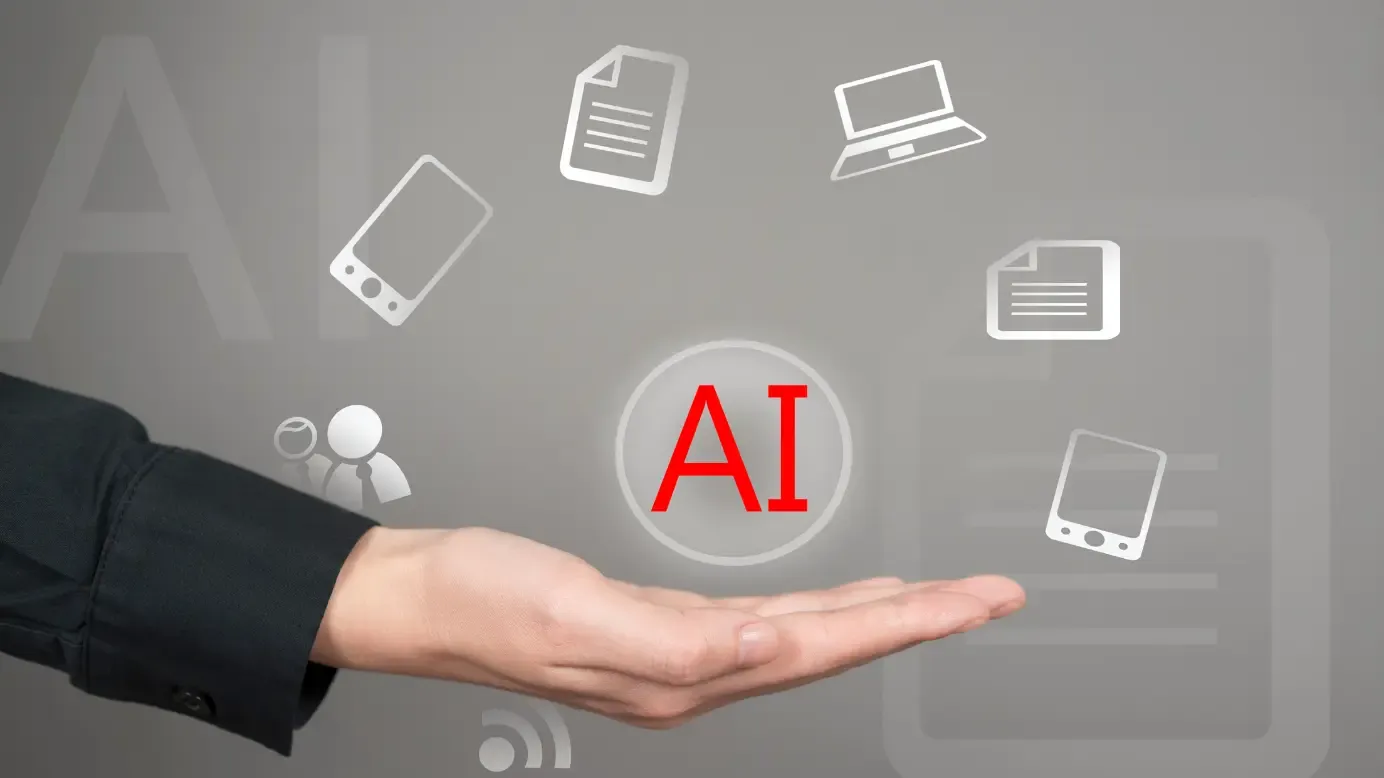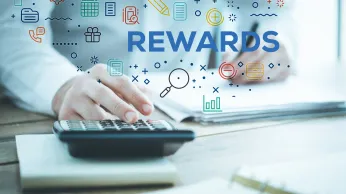AI in HR: Benefits, Tools & Future Trends for HR Professionals To Look For
Artificial intelligence in human resources (HR) is transforming the way companies manage recruitment, engagement, and performance. With AI tools for HR becoming more advanced, businesses are streamlining processes and boosting employee satisfaction.
Di halaman ini
- What is Artificial Intelligence in HR?
- Manfaat AI dalam meningkatkan pengalaman karyawan
- How is AI used in human resources?
- Top AI Tools for Human Resources in 2025
- Studi kasus kehidupan nyata dan contoh-contoh AI di bidang SDM
- Challenges and ethical considerations when leveraging artificial intelligence in HR
- How Empuls supports AI-powered employee management (EM)
- Future of AI in HR: Trends and predictions
- Kesimpulan
- Pertanyaan Umum
AI (Artificial Intelligence) telah diprediksi akan mentransformasi hampir semua industri, termasuk Sumber Daya Manusia. Beberapa perusahaan besar, seperti Google dan tim akuisisi SDM dan talenta IBM, telah mulai menggunakan AI dalam alur kerja harian mereka untuk meningkatkan efisiensi dan produktivitas serta tetap berada di atas lanskap digital yang terus berkembang.
It has been reported that 76% of HR leaders believe that if they don't adopt HR practices in the next 1-2 years, they will not be as successful as the companies that have already incorporated AI technology.
Employees are the backbone of every company, and AI plays a huge role in enhancing the employee experience. AI has already been used in various aspects of employee management by supporting employees in learning and development and creating personalized upskilling programs based on their unique needs and preferences.
Alat bantu AI juga dapat membantu kesejahteraan karyawan, dengan berbagai alat bantu yang menawarkan wawasan berharga mengenai beban kerja dan kesejahteraan karyawan secara keseluruhan.
AI secara signifikan berdampak pada SDM dan dapat membantu membentuk kembali banyak aspek industri. Memasukkan AI ke dalam praktik SDM memiliki berbagai manfaat bagi perusahaan dan karyawan.
Ketika kecerdasan buatan diintegrasikan ke dalam SDM, para pemangku kepentingan berharap kecerdasan buatan dapat digunakan secara efisien. Dengan banyaknya industri yang menggunakan AI untuk pekerjaan yang lebih cepat dan efisien, perusahaan harus beradaptasi dan tetap menjadi yang terdepan dalam persaingan.
What is Artificial Intelligence in HR?
AI in HR refers to implementing Machine Learning (ML), Natural Language Processing (NLP), and other AI technologies to automate human resources tasks and aid decision-making.
It allows for a data-based approach to talent acquisition, employee advancement, and retention that aims to reduce biases and enhance job seekers' and employees' experiences.
AI tools can assist HR teams in diverse areas, including employee records management, payroll processing, recruitment, onboarding, and performance management.
Until recently, human resources was viewed as a purely administrative department. HR analytics (which sprung up ever since the rise of the digital era) introduced a more evidence-based approach to managing people, including a data-driven model instead of intuition-based decision-making.
Model berbasis data ini melibatkan pengumpulan dan analisis data SDM seperti tingkat pergantian karyawan, ketidakhadiran, dan demografi staf untuk memahami pola dan membantu pengambilan keputusan penting di bidang sumber daya manusia.
However, with the gradual passing of time and the introduction of advanced data analytics and AI tools, the role of HR has evolved. HR departments today use data more strategically to make better decisions, predict future trends, and contribute to organizational performance and growth.
Because of this, organizations now acknowledge HR as an effective strategic partner that can help shape business strategy and gain a competitive edge.
Interestingly, 81% of HR leaders are exploring AI to improve organizational efficiency, and 93% use AI tools to reduce organizational costs. One of the top barriers for 37% of HR Managers implementing AI is the lack of integration into the existing systems.
While traditional AI applications have streamlined HR tasks, generative AI is revolutionizing the field by enabling the creation of new content and insights. According to McKinsey, generative AI offers significant value in HR through:
- Content creation: Automating the development of job postings and personalized candidate communications.
- Data summarization: Extracting insights from unstructured data to enhance performance management.
- Employee engagement: Utilizing AI-driven chatbots to provide personalized learning recommendations.
- People analytics: Analyzing large datasets to predict attrition and inform workforce planning.
These are only few applications of AI that can lead to the substantial efficiency gains and more informed decision-making in HR functions.
Manfaat AI dalam meningkatkan pengalaman karyawan
Ada berbagai manfaat yang dapat diperoleh tim HR dari penggunaan AI untuk meningkatkan pengalaman karyawan. Beberapa manfaat yang signifikan meliputi:
1. Menyederhanakan proses rekrutmen
AI algorithms can effectively analyze vast candidate data, enhancing the recruitment process's speed and accuracy. AI can also provide more objective candidate evaluation, which can help reduce unconscious biases and ensure a fair selection process. It removes human error and subjective decision-making, which fosters fairer hiring practices.
AI juga memiliki potensi untuk menilai perilaku kandidat di tempat kerja melalui teknik analisis yang canggih, yang dapat membantu mengidentifikasi kandidat yang paling cocok untuk organisasi. AI juga dapat membantu meramalkan kebutuhan tenaga kerja di masa depan dengan menganalisis strategi organisasi, tren pasar, dan data kinerja.
2. 2. Meningkatkan proses orientasi
AI can help automate the daily onboarding tasks and allows HR teams to focus on the strategic side of things. AI can also help create a personalized onboarding experience, as it will be tailored to each employee's individual needs, enhancing their initial engagement and allowing them to integrate seamlessly into the company's culture. By quickly setting up your accounts and offering personalized training programs, AI-driven systems help speed up the recruitment and onboarding process.
3. Meningkatkan keterlibatan karyawan
Alat bantu AI dapat terus melacak tujuan dan kinerja karyawan dan memberikan umpan balik yang cepat. Dengan menetapkan tujuan yang jelas dan terukur, AI juga mendorong evaluasi kinerja yang tidak bias.
AI can also analyze performance data to help predict future performance trends, which supports successful planning and talent management. AI-automated performance management can also lead to enhanced productivity and better results.
4. Strategic workforce planning enhanced by AI
AI facilitates strategic workforce planning by analyzing current workforce capabilities and predicting future talent needs. Through data-driven insights, HR can identify skill gaps, forecast turnover rates, and develop targeted recruitment strategies.
For instance, AI can assess the impact of emerging technologies on job roles, enabling proactive reskilling programs. This strategic approach ensures that organizations remain agile and prepared for future workforce challenges.
How is AI used in human resources?
Artificial Intelligence (AI) is transforming human resources by automating repetitive tasks, improving decision-making, and enhancing employee experiences. HR departments are leveraging AI to streamline their operations and create more personalized, efficient, and data-driven processes.
From recruitment to employee retention, AI is helping HR professionals focus on strategic initiatives that drive business growth. Here are some common applications of AI in human resources:
- Recruitment and talent acquisition: AI automates resume screening, candidate ranking, and job matching using algorithms and predictive analytics.
- Employee engagement and support: Chatbots and virtual assistants provide real-time assistance and support, improving employee satisfaction and productivity.
- Onboarding and training: AI tools generate personalized onboarding experiences and recommend learning paths tailored to individual roles and goals.
- Performance management: AI analyzes performance data to offer objective feedback and identify high-potential employees for succession planning.
- Workforce planning: Predictive analytics help HR teams forecast hiring needs, detect flight risks, and optimize workforce strategies.
- Diversity and inclusion: Natural language processing (NLP) detects biases in job descriptions and promotes inclusive language to attract diverse candidates.
- Policy and content creation: Generative AI tools help create consistent, data-backed HR documents, such as job descriptions, training manuals, and performance summaries.
With these applications, AI is reshaping the future of work by empowering HR teams to be more agile, proactive, and employee-centric.
Top AI Tools for Human Resources in 2025
Alat dan teknologi AI kini dimasukkan ke dalam praktik SDM untuk meningkatkan efisiensi, keterlibatan karyawan, dan hasil bisnis yang diinginkan. Beberapa alat dan teknologi AI yang penting yang disertakan dalam SDM meliputi:
1. Chatbot dan asisten virtual
AI chatbots are virtual assistants that use artificial intelligence to support and assist employees. These chatbots can answer frequently asked questions, provide insights about the company's policies, and assist with basic HR tasks and inquiries. AI chatbots can help streamline employee support processes, lessen response times, and enhance employee satisfaction.
Asisten Virtual yang didukung oleh AI dapat membantu departemen SDM dalam berbagai tugas, seperti membuat pekerjaan mereka lebih efisien dan efektif. Mereka juga dapat membantu mengotomatiskan tugas-tugas SDM yang berulang seperti orientasi, cuti, dan administrasi tunjangan.
They can also offer personalized recommendations to employees regarding career development, performance management, and other training opportunities. Virtual assistants can also allow HR specialists to focus on more strategic tasks and enhance employee engagement.
2. Predictive analytics
Solusi analitik prediktif menggunakan algoritme AI untuk memeriksa data karyawan dan mengamati orang-orang yang memiliki potensi lebih tinggi untuk sukses dalam perannya. Metode-metode ini juga dapat memprediksi kesuksesan di masa depan dengan mempertimbangkan variabel kinerja dan lintasan karier sebelumnya.
By identifying high-potential candidates, companies can focus their development efforts and offer progress in the company. Predictive analytics can aid succession planning by identifying prospective talent within the organization.
Memanfaatkan analitik prediktif dapat menghasilkan perencanaan tenaga kerja yang lebih baik. AI dapat mengidentifikasi pola dan tren dengan menganalisis sejumlah besar data, sehingga perusahaan dapat mengambil keputusan yang lebih cerdas terkait perekrutan dan perencanaan suksesi. Analisis prediktif juga dapat mengidentifikasi potensi risiko keluarnya karyawan, sehingga departemen SDM dapat mengembangkan strategi untuk membantu mempertahankan karyawan terbaik secara efektif.
3. Pemrosesan bahasa alami (NLP)
HR professionals use NLP techniques to analyze employee and candidate data, emails, resumes, and feedback. NLP algorithms analyze unstructured text data to utilize valuable information, including sentiment analysis, personality traits, and competency.
Hal ini dapat membantu tim HR dalam membuat keputusan perekrutan dan retensi talenta serta meningkatkan motivasi karyawan. NLP juga dapat mengotomatiskan proses HR seperti penyaringan resume, analisis umpan balik karyawan, dan pemeringkatan kandidat.
Para profesional HR dapat menggunakan NLP untuk memindai resume dan menemukan kandidat yang tepat untuk pekerjaan tersebut. Algoritma NLP mengekstrak kata kunci dan frasa, mencocokkannya dengan deskripsi pekerjaan, dan memberi peringkat pada kandidat berdasarkan kualifikasi mereka.
NLP juga dapat digunakan untuk analisis sentimen, yang dapat digunakan untuk mengidentifikasi seberapa baik kandidat akan cocok dengan budaya perusahaan. Algoritma NLP juga dapat mengidentifikasi bias dalam lowongan pekerjaan dan menggunakan bahasa yang inklusif untuk meningkatkan keragaman dalam kumpulan kandidat.
4. AI Centers of Excellence (CoE) in HR
Establishing an AI Center of Excellence (CoE) within HR departments serves as a centralized body to oversee AI initiatives. The CoE is responsible for setting best practices, ensuring compliance with ethical standards, and facilitating knowledge sharing across the organization.
By having a dedicated team focused on AI, HR can more effectively integrate AI tools for human resources, drive innovation, and maintain consistency in AI applications.
5. Generative AI (GenAI) in HR
Generative AI (GenAI) is revolutionizing HR by enabling the creation of content such as job descriptions, training materials, and policy documents. HR departments are leveraging GenAI to automate repetitive tasks, allowing professionals to focus on strategic initiatives.
For instance, GenAI can generate personalized onboarding materials tailored to individual roles, enhancing the new hire experience. Additionally, it aids in drafting performance review summaries by analyzing employee data, ensuring consistency and objectivity.
Studi kasus kehidupan nyata dan contoh-contoh AI di bidang SDM
Mari kita tinjau beberapa contoh nyata tentang bagaimana beberapa perusahaan top dunia telah memasukkan AI ke dalam praktik SDM mereka dan bagaimana strategi ini telah menyiapkan mereka untuk sukses.
1. Unilever's AI-powered recruitment
Unilever's HR department has replaced conventional hiring with digital interviews and AI-powered online assessments. This unique approach also expands the talent pool by enhancing diversity and inclusivity.
It also reduces unconscious biases, which ensures a fair and objective selection process. This has resulted in a more efficient hiring process that aligns with the demands and expectations of the modern talent pool.
2. Keterlibatan karyawan yang digerakkan oleh AI di Hilton
Hilton has implemented AI-driven strategies to enhance employee engagement. These strategies aim to improve the employee experience, increase productivity, and reduce turnover rates. By implementing AI, Hilton saw an opportunity to enhance human connection and responsiveness in the application and interview process.
Para pemimpin SDM melihat kekuatan AI untuk mengurangi waktu yang dibutuhkan untuk mengisi lowongan pekerjaan, meningkatkan dan memperbaiki pengalaman kandidat, dan mengurangi beban kerja administratif perekrut. Hal ini berujung pada penciptaan Ally, sebuah chatbot untuk kandidat yang masuk, yang dapat ditemukan di situs karier Hilton.
Hilton juga menggunakan AI untuk wawancara video dan penilaian, yang menghasilkan Net Promoter Score sebesar 85 dan meningkatkan tingkat perekrutan melalui wawancara. Dengan menggunakan Ally, pekerjaan yang Anda lamar akan dikirim ke ponsel Anda dengan tautan untuk melengkapi lamaran kerja di Hilton dalam waktu kurang dari satu menit, dan ini cukup mengesankan.
3. Analisis Watson IBM di bidang SDM
IBM Watson Orchestrate is an AI-powered tool that allows HR professionals to automate routine HR tasks, analyze data, and make better business decisions. It uses Natural Language Processing (NLP) to draw from prebuilt and custom skills to implement functions specific to human resources processes by integrating with applications that your HR department already relies on.
Para profesional TA dapat menggunakan Orchestrate untuk mengotomatiskan tugas-tugas yang memakan waktu seperti pencarian kandidat dan perekrutan, sehingga mereka dapat memfokuskan waktu dan energi mereka pada aspek-aspek yang lebih strategis dalam perekrutan. Hal ini telah meningkatkan produktivitas para profesional HR, yang berujung pada perekrutan yang lebih baik untuk kandidat-kandidat yang luar biasa.
Orchestrate juga membantu mengotomatiskan tugas-tugas pengadaan manual, yang menghemat waktu tim di IBM untuk merencanakan inisiatif strategis dan memenuhi kebutuhan dan persyaratan klien. Proses orientasi membutuhkan perhatian manusia dan banyak dokumen. Watson dari IBM mengotomatiskan proses yang memakan waktu ini dan memperkenalkan kandidat baru dengan lancar ke perusahaan.
Dengan mengalihkan tugas-tugas ini ke Orchestrate, tim HR dapat fokus dan memberikan pendekatan yang lebih berpusat pada manusia untuk perusahaan dan karyawan.
Challenges and ethical considerations when leveraging artificial intelligence in HR
Although there are many benefits that artificial intelligence offers to HR teams, there are still some challenges and ethical considerations that you need to be aware of when incorporating AI in HR practices. Some critical factors to consider include:
1. Privasi dan keamanan data
Dengan meningkatnya kebutuhan dan penggunaan AI dalam praktik SDM, terutama saat menangani data karyawan dan kandidat yang sensitif, ada kekhawatiran yang berkembang terkait privasi data dan keamanan siber. Perusahaan harus menyimpan data karyawan mereka secara sensitif dan hati-hati serta mematuhi peraturan perlindungan data seperti GDPR dan CCPA.
Meskipun penggunaan AI di bidang SDM mendapatkan momentumnya, banyak pemimpin SDM yang memiliki kekhawatiran terkait keakuratannya. Mereka juga khawatir dengan jaminan bahwa data sensitif yang diberikan oleh karyawan dan kandidat tidak digunakan untuk pelatihan lebih lanjut dari model AI, yang pada akhirnya membahayakan privasi dan keamanan mereka.
HR departments need to implement robust cybersecurity measures, like investing in a Remote access VPN, using reliable antivirus software, and using multi-factor authentication to maintain trust, protect employees' confidential information, and ensure they're protected from potential data breaches.
2. Bias dan keadilan dalam AI
One of the most significant drawbacks of using AI is the bias during the hiring process. The US Equal Opportunity Employment Commission announced in May last year that employers using AI tools can be liable for discriminatory hiring practices. HR leaders need to ask specific questions during the software purchasing process and ensure they are aware of any potential biases.
Algoritme AI dapat melanggengkan bias sosial dalam data yang dilatih. Berhati-hatilah dengan potensi keluaran diskriminatif berdasarkan jenis kelamin, ras, usia, dan karakteristik sensitif lainnya.
Jika data yang digunakan untuk melatih model AI memiliki bias, maka bias ini dapat diabadikan dalam proses pengambilan keputusan. Hal ini dapat menyebabkan praktik perekrutan yang diskriminatif dan kesempatan yang tidak setara bagi karyawan dari berbagai latar belakang.
3. Solusi satu ukuran untuk semua
Sistem SDM berbasis AI dapat menawarkan solusi standar untuk masalah departemen SDM yang paling umum. Meskipun hal ini dapat membantu meningkatkan efisiensi, namun hal ini juga menyebabkan kurangnya dukungan individual untuk kebutuhan dan persyaratan pribadi karyawan.
Setiap karyawan membawa kekuatan, kelemahan, dan pengalaman mereka masing-masing ke tempat kerja. Hanya dengan mengandalkan AI untuk mengelola kinerja dan pengembangan karyawan dapat menghalangi sentuhan dan hubungan manusia yang diperlukan untuk memahami dan membina talenta terbaik.
4. Emphasis on human-centered AI approaches
Adopting a human-centered approach to AI in HR ensures that technology serves to augment human decision-making rather than replace it. This involves designing AI systems that are transparent, explainable, and aligned with human values.
For example, AI-driven recruitment tools should provide insights into their decision-making processes, allowing HR professionals to understand and trust the outcomes. By focusing on human-centered AI, organizations can foster greater acceptance and effective utilization of AI tools for human resources.
5. Navigating AI-induced workforce disruptions
The introduction of AI in HR processes may lead to workforce disruptions, including changes in job roles and required skill sets.
Organizations must proactively manage these transitions by communicating changes, providing reskilling opportunities, and involving employees in the transformation process. By addressing potential disruptions head-on, companies can mitigate resistance and foster a culture of adaptability.
How Empuls supports AI-powered employee management (EM)
As HR teams increasingly turn to artificial intelligence for smarter and faster decision-making, Empuls stands out as a powerful platform that bridges AI with employee management (EM) to create more engaged, productive, and satisfied workforces. Empuls doesn’t just streamline processes—it enhances the entire employee lifecycle, making it a valuable addition to any HR tech stack embracing AI.
1. Automating employee engagement with intelligent nudges

Empuls uses AI-powered nudges and personalized notifications to drive participation in engagement programs. Whether it’s pulse surveys, recognition events, or wellness challenges, the platform ensures that employees stay informed and motivated through timely reminders. This automation reduces manual follow-ups and ensures consistent engagement across teams.
2. Using analytics to improve employee experience

Empuls provides real-time dashboards and sentiment analysis based on employee feedback, surveys, and interactions. With built-in analytics, HR leaders can identify patterns in engagement, burnout risk, and recognition trends. These insights empower organizations to make data-driven decisions to retain top talent and elevate morale.
3. Enabling continuous recognition and rewards

Recognition is a key pillar of employee management, and Empuls automates this with AI-driven suggestions and reward triggers. For example, if an employee reaches a milestone or consistently exceeds performance goals, Empuls can automatically prompt managers to recognize and reward them through digital badges, gift cards, or custom awards.
This fosters a culture of continuous appreciation, boosts motivation, and aligns with the broader AI-driven approach to HR.
4. Personalizing employee communication at scale

AI in HR thrives on personalization, and Empuls leverages this by delivering tailored internal communications to employees based on their behavior, location, and preferences. Whether it's onboarding information, learning modules, or wellness updates, the right message is delivered to the right person at the right time—without HR teams needing to micromanage every message.
This enhances the employee communication experience, a critical component of AI-led EM strategies.
5. Supporting strategic HR planning with feedback insights

With Empuls, HR teams can conduct pulse surveys, lifecycle feedback, and eNPS measurements with ease. The platform uses AI to categorize and summarize open-ended responses, helping HR teams quickly interpret employee sentiment and act on it. This feedback loop is essential for shaping talent strategies and planning workforce interventions proactively.
Whether you're aiming to reduce attrition, drive engagement, or improve your employer brand, Empuls offers the AI-enabled infrastructure to support your goals and stay ahead of the competition. Schedule a call now to learn more!
Future of AI in HR: Trends and predictions
Masa depan SDM dan kemajuannya terkait erat dengan kecerdasan buatan. AI akan membantu mentransformasi praktik-praktik SDM, memungkinkan perekrutan, akuisisi talenta, dan manajemen karyawan menjadi lebih efisien. Para profesional SDM kini dapat merasakan proses yang disederhanakan dan fokus pada hasil yang digerakkan oleh data.
The integration of AI in HR has led to the creation of specialized roles aimed at managing and optimizing AI tools for human resources. Positions such as HR AI Product Managers and AI Ethics Officers are becoming increasingly common.
These roles are responsible for overseeing the deployment of AI solutions, ensuring ethical considerations are addressed, and aligning AI initiatives with organizational goals. By having dedicated professionals in these positions, companies can better navigate the complexities of AI implementation in HR.
Gartner reports that by 2025, "60% of enterprise organizations will adopt a responsible AI framework for their HR technology, and in turn, achieve a greater employee experience and trust in the organization."
Namun, penting untuk dicatat bahwa AI tidak akan menggantikan kebutuhan akan tenaga profesional SDM. Perspektif dan pengalaman manusia memainkan peran penting dalam sumber daya manusia, yang memungkinkan perusahaan untuk berkembang dan tumbuh. Itulah mengapa perusahaan harus mencapai keseimbangan yang tepat antara teknologi dan interaksi manusia untuk mendapatkan manfaatnya.
Kesimpulan
Alat dan solusi AI dapat meningkatkan pengalaman karyawan dan meningkatkan retensi. Karyawan dapat mengurangi tugas-tugas admin yang berulang, merampingkan alur kerja, dan mendapatkan keterampilan teknologi baru.
Menggunakan AI untuk meningkatkan pengalaman karyawan akan membantu kesejahteraan karyawan dan juga membantu organisasi membangun reputasi yang baik. Alat bantu AI dapat membuat program pelatihan yang dipersonalisasi dan mengotomatiskan tugas-tugas manual dan berulang, sehingga memungkinkan alur kerja yang lancar, motivasi karyawan, dan produktivitas.
Pertanyaan Umum
1. What is the role of AI in HR?
AI in HR streamlines and enhances tasks like recruitment, onboarding, performance management, and workforce planning. It helps automate repetitive processes, improve decision-making with data insights, reduce biases, and personalize employee experiences.
2. Can HR be replaced by AI?
No, AI cannot fully replace HR. While it automates tasks and boosts efficiency, the human touch in areas like employee relations, ethical decision-making, and organizational culture is irreplaceable. AI supports HR, but doesn’t eliminate the need for human professionals.
3. What companies use AI in HR?
Top companies using AI in HR include Unilever, Hilton, IBM, and Google. These companies leverage AI for recruiting, engagement, onboarding, and analytics, improving both operational efficiency and employee experience.
4. How much is AI used in HR?
AI usage in HR is rapidly increasing—81% of HR leaders are exploring AI to improve efficiency, and 93% use it to reduce costs. Its adoption spans various functions, with growing reliance on tools like chatbots, predictive analytics, and generative AI.













